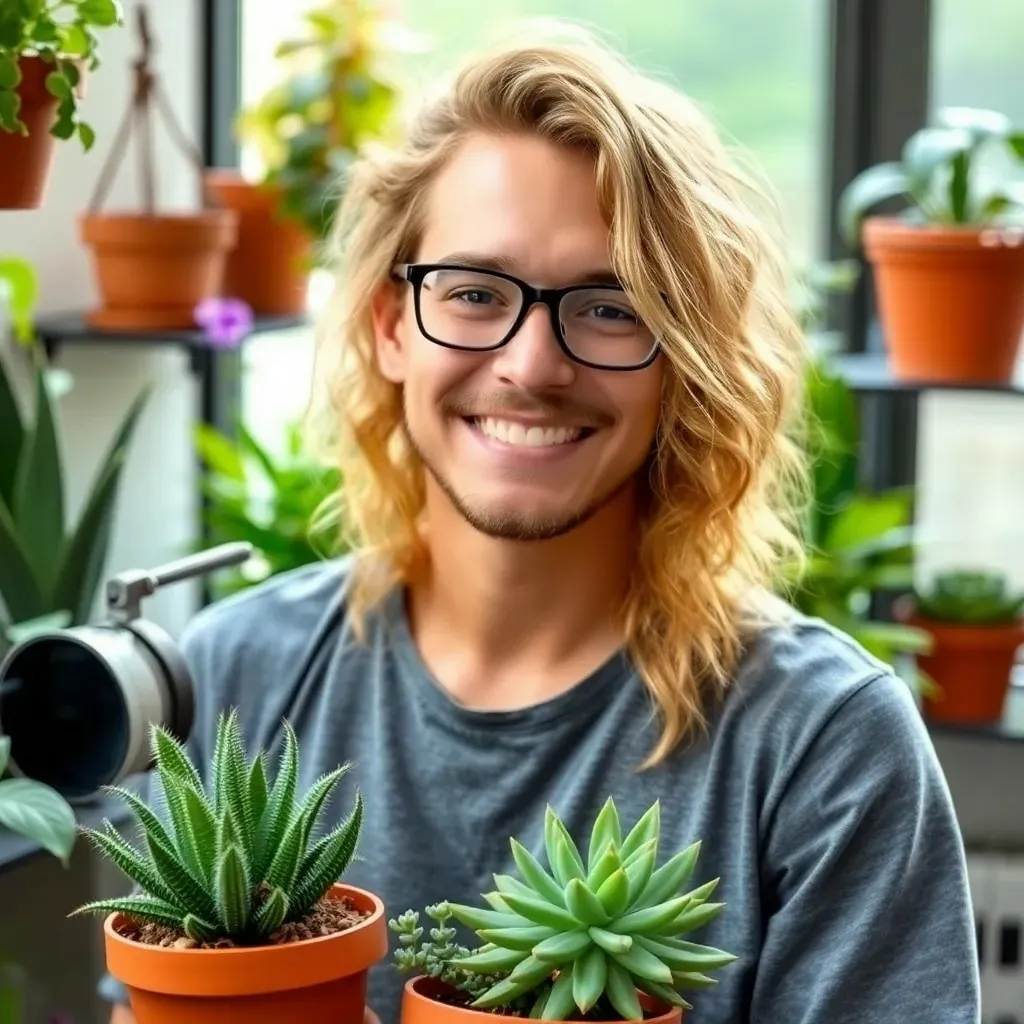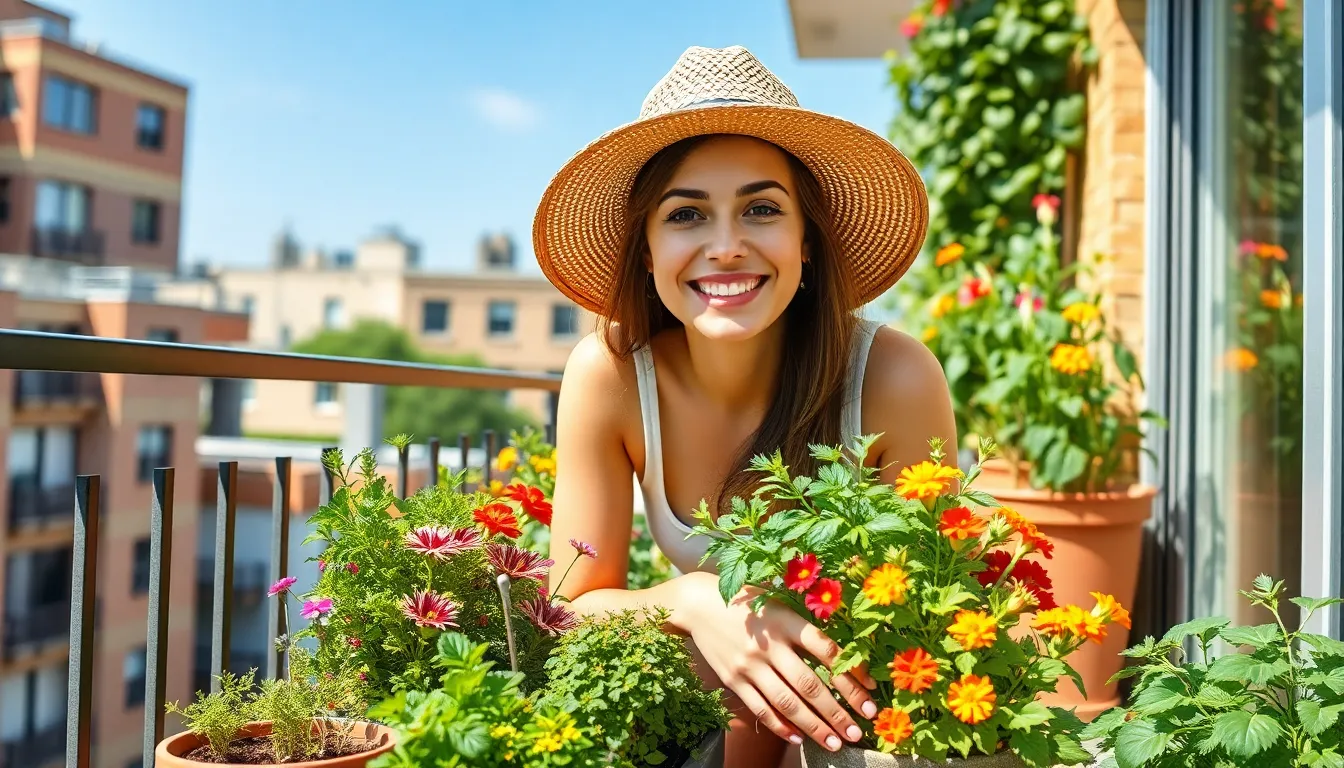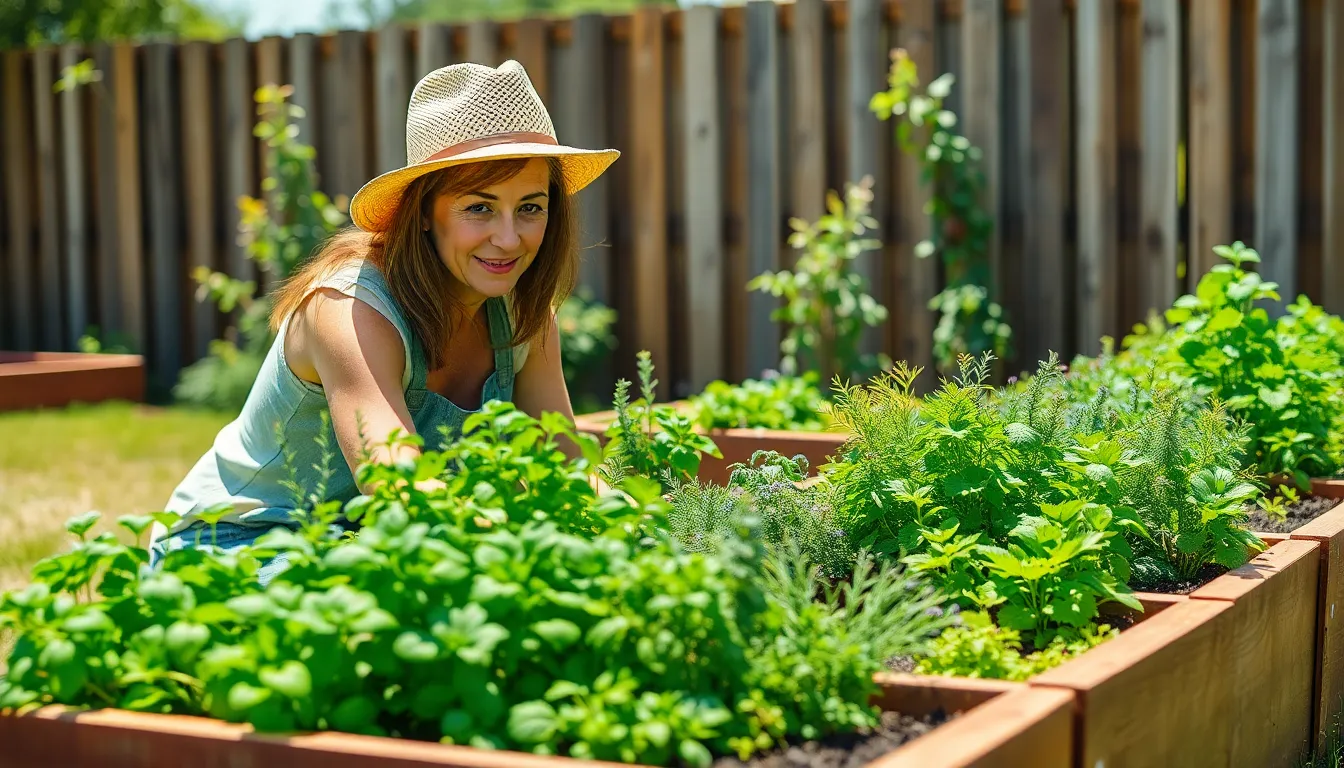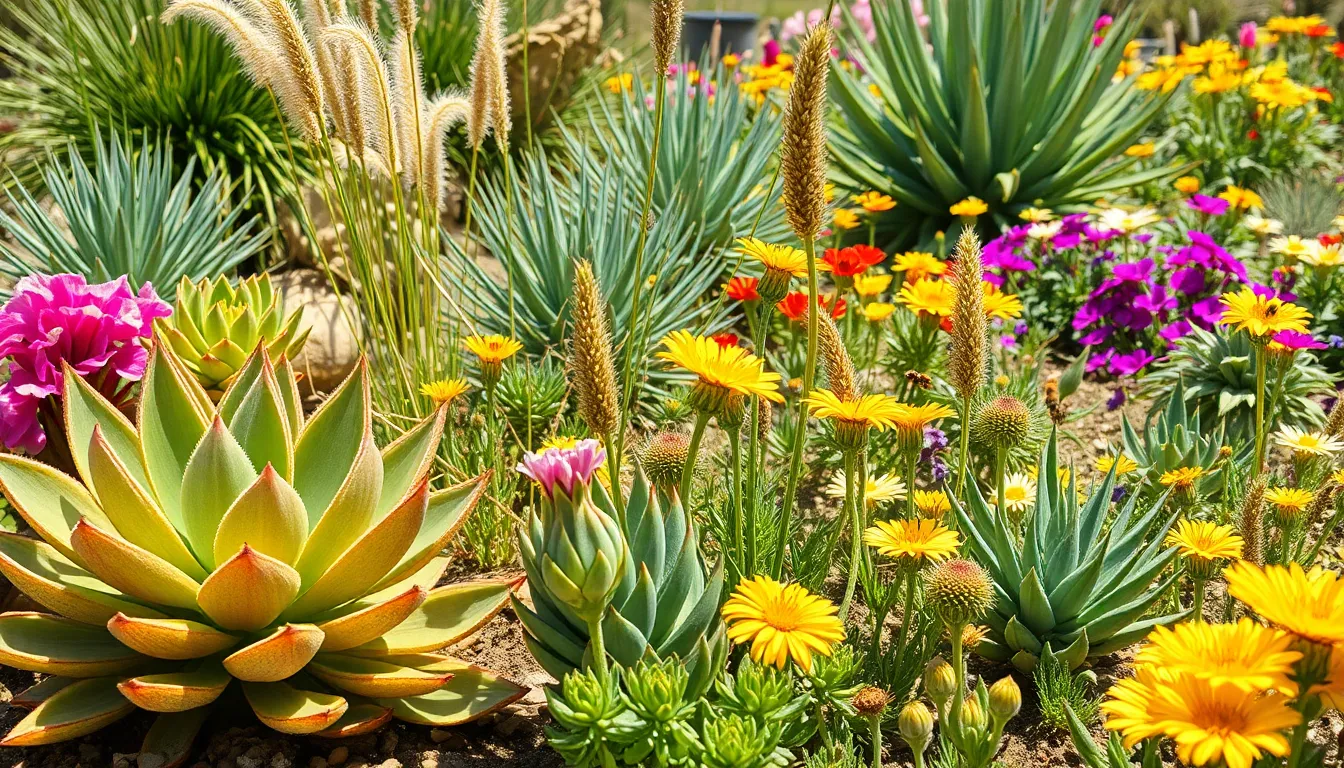In today’s urban landscape, the charm of gardening often feels out of reach for those with limited space. However, small spaces can flourish with creativity and the right approach. Whether it’s a tiny balcony, a cozy patio, or a compact backyard, anyone can transform their little nook into a vibrant green oasis.
Gardening for small spaces isn’t just about growing plants; it’s about maximizing every inch to create a sanctuary. Vertical gardens, container planting, and smart layouts can turn even the most modest areas into lush retreats. With the right techniques and a bit of inspiration, anyone can enjoy the beauty and benefits of gardening, no matter how small their space may be.
Table of Contents
ToggleUnderstanding Gardening for Small Spaces
Gardening in small spaces offers diverse opportunities for creativity and resourcefulness. Effective techniques allow individuals to transform limited areas into lush, inviting environments.
Importance of Space Optimization
Space optimization plays a crucial role in small-space gardening. Utilizing vertical gardens enables plants to grow upwards, freeing floor space. Selecting multi-functional furniture can provide additional planting areas while maintaining functionality. Incorporating hanging planters adds greenery without consuming ground space. Organizing tools and supplies in vertical storage solutions declutters areas, enhancing usability.
Benefits of Small-Space Gardening
Small-space gardening delivers numerous advantages. Reduced maintenance requirements mean gardeners spend less time on upkeep. Container gardening allows for flexibility; plants can be relocated as needed. Access to fresh herbs and vegetables promotes healthier eating habits. Engaging in gardening fosters relaxation and stress relief. Increasing biodiversity supports local ecosystems, benefiting the environment. Small gardens often become focal points for community engagement and connection.
Types of Small-Space Gardens
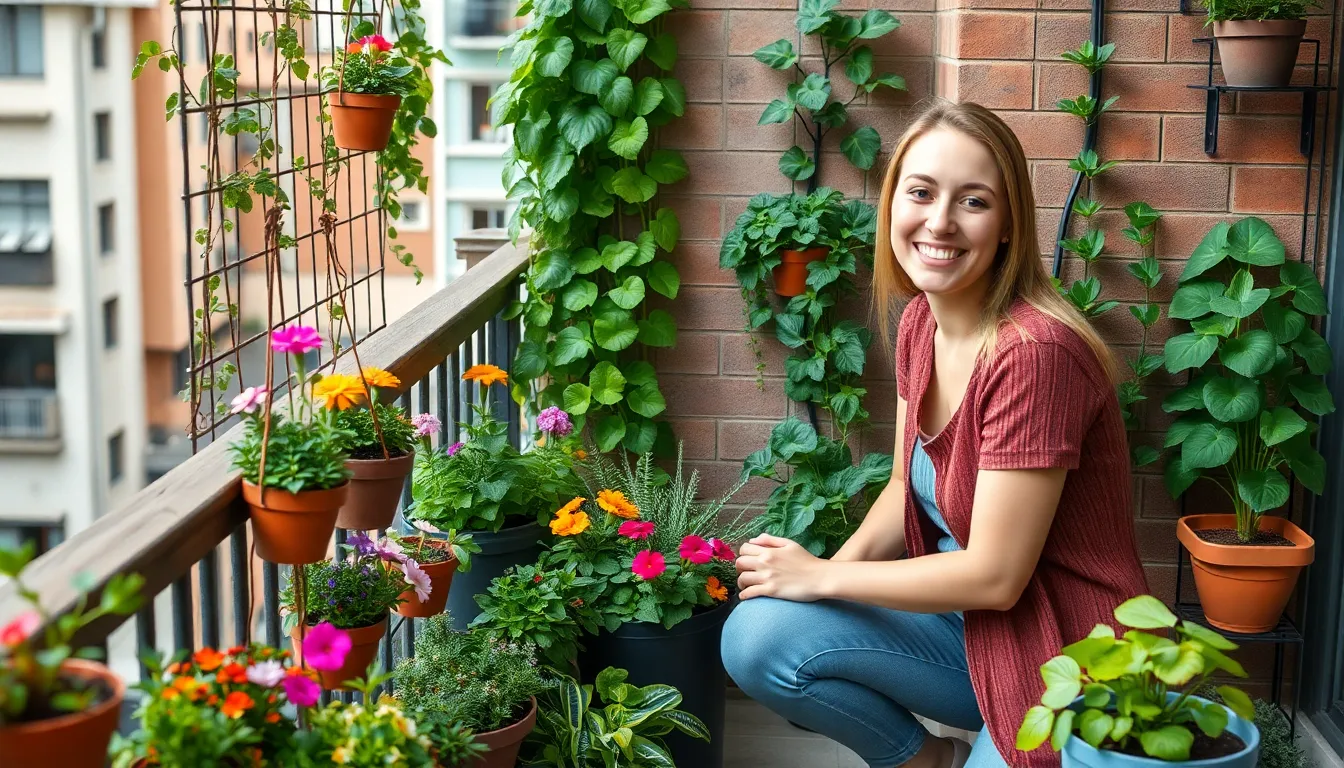
Small-space gardens offer various approaches to make the most of limited areas. Popular methods include container gardening and vertical gardening, each with unique benefits and applications.
Container Gardening
Container gardening involves growing plants in pots or other containers, allowing flexibility in placement and design. This method suits various plants, from ornamental flowers to herbs and vegetables.
- Diversity of Containers: Gardeners can use a variety of containers, such as terracotta pots, hanging baskets, or recycled containers, enhancing the aesthetic appeal.
- Mobility and Adaptability: Containers allow easy relocation based on sunlight availability or seasonal changes. Moving pots creates diverse microclimates within small areas.
- Soil Control: Using specialized potting mixes helps optimize nutrient levels and drainage, supporting healthy plant growth.
Vertical Gardening
Vertical gardening utilizes wall space or structures to grow plants upward, maximizing minimal ground space. This technique enhances visual interest and allows for efficient use of vertical plane.
- Trellises and Wall Planters: Using trellises, wall-mounted planters, or living walls, gardeners create a lush backdrop while freeing up limited floor space.
- Drought Tolerance: Well-designed vertical gardens often require less water due to reduced soil volume, promoting sustainability.
- Enhanced Air Circulation: This method improves airflow around plants, minimizing disease risk and fostering healthier growth.
Both container and vertical gardening techniques empower small-space gardeners to cultivate greenery, enhance urban living, and promote a sustainable lifestyle.
Essential Tools and Supplies
Gardening in small spaces requires essential tools and appropriate supplies to ensure success and ease of maintenance. Specific tools aid in maximizing efficiency and promote healthy plant growth.
Must-Have Gardening Tools
- Hand Trowel: A hand trowel allows for precise planting, transplanting, and soil loosening in small containers.
- Pruning Shears: Pruning shears help maintain plant health by trimming dead or overgrown leaves, promoting better air circulation.
- Watering Can: A lightweight watering can with a narrow spout ensures targeted watering, minimizing waste and avoiding oversaturation.
- Gardening Gloves: Durable gardening gloves protect hands from thorns, irritants, and dirt during planting and maintenance.
- Garden Fork: A small garden fork assists in aerating soil and mixing in fertilizers, critical for container gardening.
- Seedling Tray: Seedling trays encourage starting plants indoors, optimizing growing conditions before transplanting outside.
Choosing the Right Soil and Fertilizers
Choosing high-quality soil and fertilizers significantly impacts plant health. Containers require well-draining soil mixes tailored to specific plants.
- Potting Mix: A good potting mix contains ingredients like peat moss, pine bark, and perlite, ensuring drainage and aeration.
- Organic Fertilizer: Organic fertilizers supply essential nutrients while promoting a healthy ecosystem in the soil.
- Slow-Release Fertilizer: Slow-release options provide a steady supply of nutrients over time, reducing the frequency of applications.
- pH Testing Kit: A pH testing kit measures soil acidity or alkalinity, important for selecting compatible plants and optimizing growth conditions.
- Compost: Homemade compost enriches soil with nutrients, improving structure and water retention, critical in small-space gardens.
Plant Selection for Limited Spaces
Selecting the right plants plays a vital role in small-space gardening. Choosing compact, versatile plants enhances both aesthetic appeal and space utilization.
Best Plants for Small Gardens
- Herbs: Herbs like basil, thyme, and mint thrive in small containers, providing fresh flavors for cooking.
- Salad Greens: Varieties such as lettuce, spinach, and arugula grow quickly and can be harvested continuously.
- Compact Vegetables: Plants like radishes, cherry tomatoes, and bell peppers fit well in tight spaces, offering high yields.
- Dwarf Fruit Trees: Varieties such as dwarf apple and fig trees flourish in pots, providing fresh fruit without requiring extensive ground space.
- Flowers: Compact flowering plants like marigolds, pansies, and petunias add color and attract pollinators, enhancing the garden’s vibrancy.
Considerations for Plant Pairing
- Sunlight Needs: Select plants with similar sunlight requirements to ensure optimal growth conditions.
- Growth Habits: Pair taller plants, like tomatoes, with shorter plants, like basil, to maximize vertical space efficiently.
- Soil Preferences: Choose plants that thrive in similar soil types, ensuring uniform nutrient delivery and moisture retention.
- Water Requirements: Group plants with similar watering needs to simplify maintenance and prevent over- or under-watering.
- Companion Planting: Implement companion planting principles, such as pairing marigolds with vegetables, to repel pests and enhance growth.
Optimizing plant selection based on growth habits and environmental needs significantly enhances the success of small-space gardens. This approach ensures a thriving green space, regardless of size.
Maintenance Tips for Small-Space Gardens
Successful maintenance ensures small-space gardens remain vibrant and healthy. Regular care through effective watering techniques and pest management strategies maximizes plant growth and minimizes potential issues.
Watering Techniques
Efficient watering techniques are vital in small-space gardens. They ensure plants receive adequate moisture without waste.
- Use a Lightweight Watering Can: A manageable watering can allows for precise watering without disturbing nearby plants.
- Implement Drip Irrigation: Drip systems deliver water directly to plant roots, reducing evaporation and runoff.
- Monitor Soil Moisture: Checking soil moisture levels prevents overwatering or underwatering. A moisture meter offers accurate readings.
- Water Early or Late: Timing watering in the early morning or late evening minimizes evaporation, ensuring plants receive maximum hydration.
- Group Plants by Water Needs: Arranging plants with similar water requirements together simplifies the watering process and promotes consistent health.
Pest Management Strategies
Effective pest management protects small-space gardens without chemical interventions.
- Encourage Beneficial Insects: Attracting beneficial insects like ladybugs and lacewings helps control pest populations naturally.
- Utilize Neem Oil: Neem oil serves as an organic pesticide, repelling pests while being safe for plants and pollinators.
- Implement Companion Planting: Planting pest-repelling companions like marigolds alongside vegetables helps reduce pest infestations.
- Regularly Inspect Plants: Frequent monitoring for signs of pests, such as wilting or discoloration, allows for early intervention.
- Remove Debris Promptly: Clearing dead leaves and plant material eliminates potential hiding places for pests, maintaining a healthier environment.
Gardening in small spaces offers a unique opportunity to create a personal oasis amidst urban life. With innovative techniques like vertical gardening and container planting, anyone can transform limited areas into lush retreats. By selecting the right plants and employing effective maintenance strategies, small-space gardeners can enjoy the benefits of fresh produce and vibrant greenery.
This approach not only enhances one’s living environment but also fosters a deeper connection to nature. Embracing small-space gardening encourages creativity and resourcefulness, proving that even the tiniest of areas can thrive with the right mindset and tools. As urban dwellers seek ways to incorporate nature into their lives, small-space gardening stands out as an accessible and rewarding endeavor.

